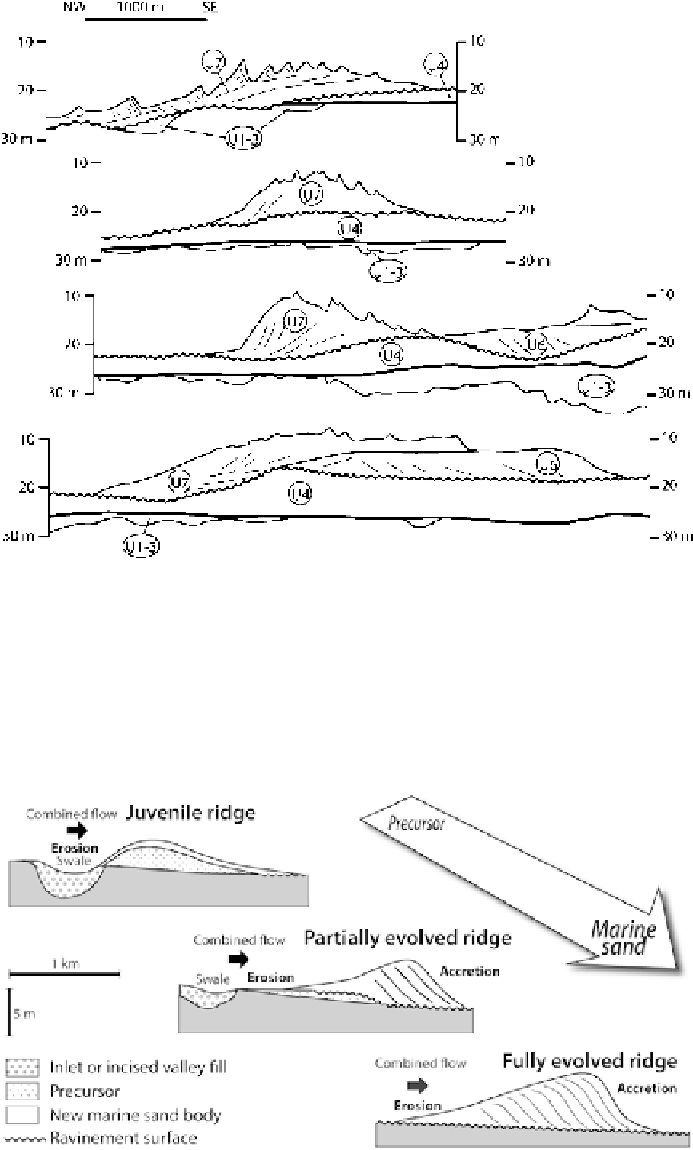Geology Reference
In-Depth Information
Fig. 13.23
Seismic profiles across Middelkerke Ridge (Flemish
Ridges, Southern North Sea, see Fig.
13.6a
).
U1
-
U3
estuarine
channels and tidal flats;
U4
coastal barrier, shoreface and ebb-
deltas;
U6
-
U7
active, offshore tidal ridge. The sinusoidal
bold
line
is the offshore tidal ravinement surface; the clean, offshore
sands of the ridges lie on this surface. The plain thick
black line
is the wave ravinement surface, which is marked by a pebble lag
(After Trentesaux et al.
1999
)
Fig. 13.24
Evolutionary model of offshore ridges. An initial
bump, or nucleus, is required to start the Huthnance process. As
the ridge migrates in response to the residual current, this initial
core ends up being removed by erosion of the upcurrent side of
the ridge. Fully developed ridges are exemplified by the deepest
Norfolk Ridges in the Southern North Sea (Figs.
13.6
a and
13.10
). Partially evolved ridges that retain part of the original
nucleus are more similar to the Flemish Ridges (Fig.
13.23
) that
are located closer to the coast and started to form later in the last
transgression (From Snedden and Dalrymple
1999
)


